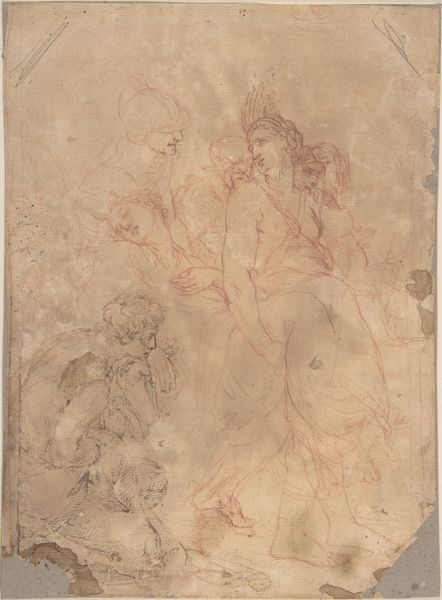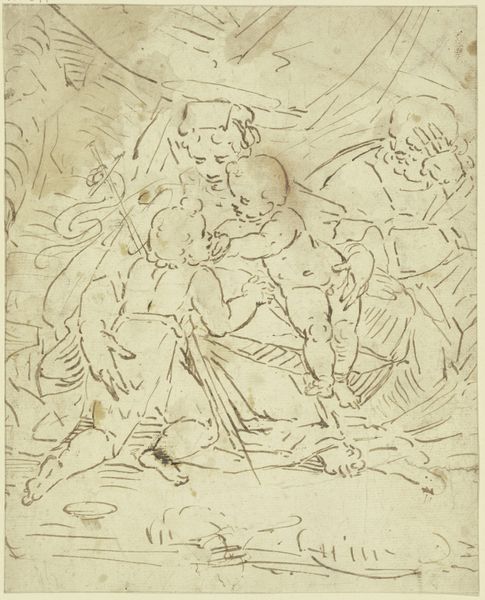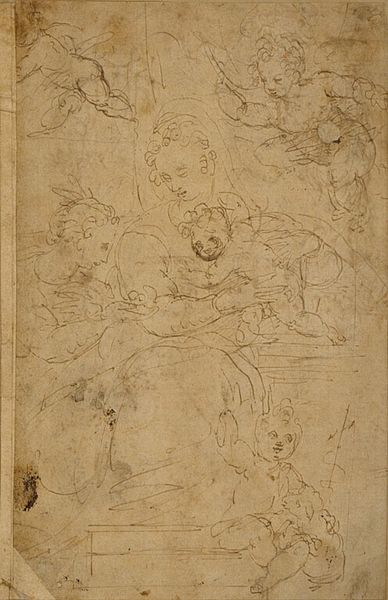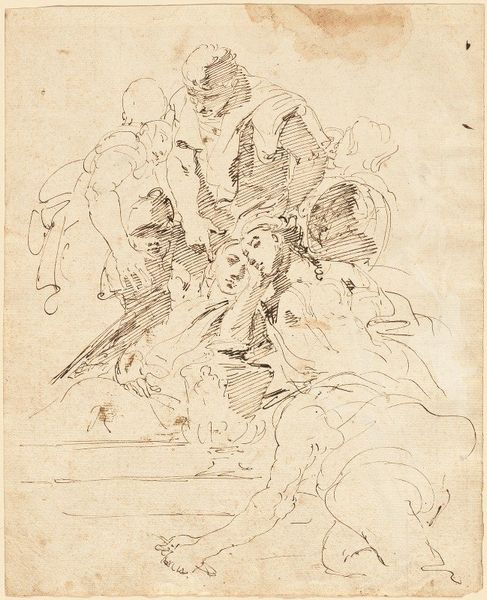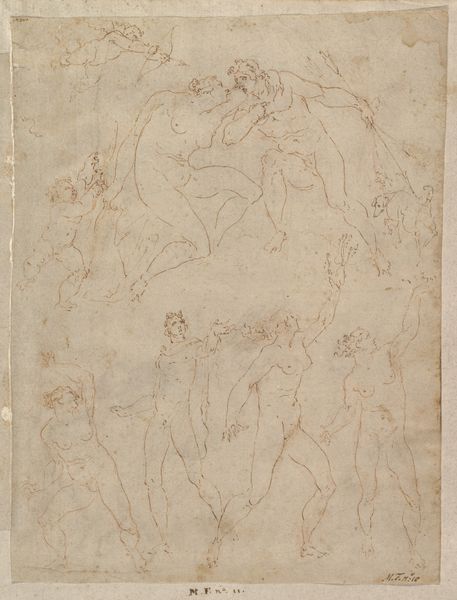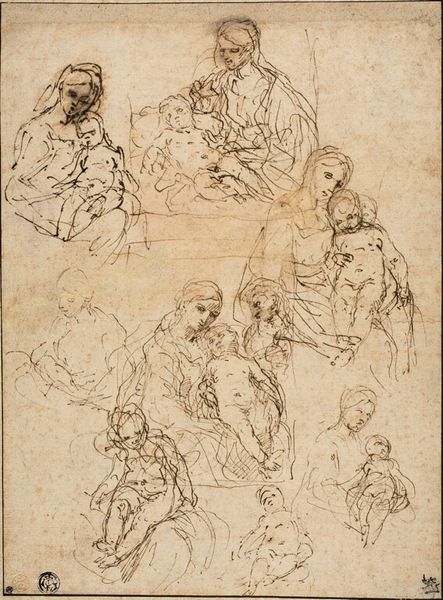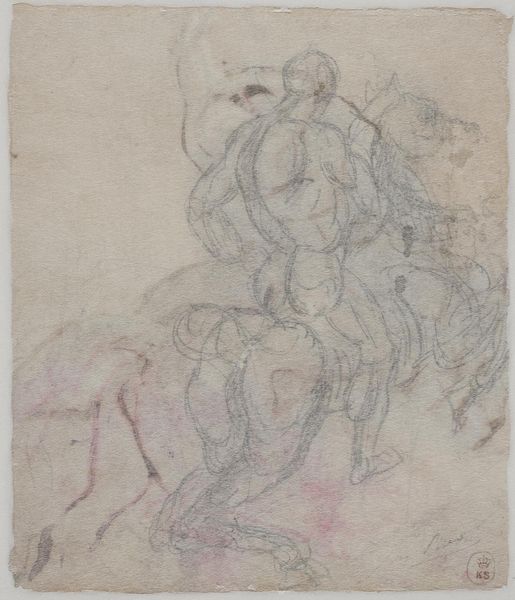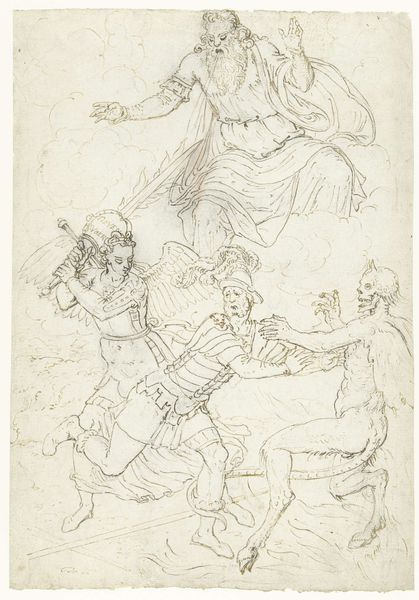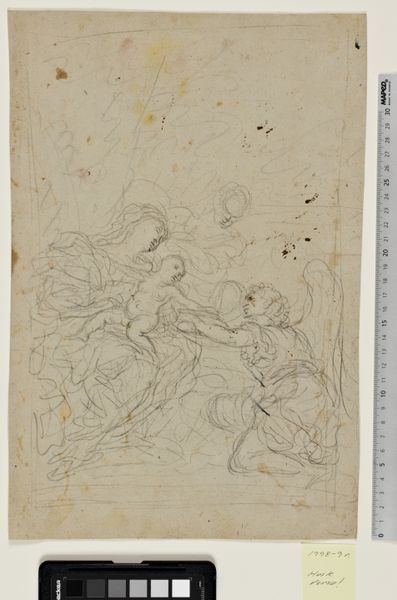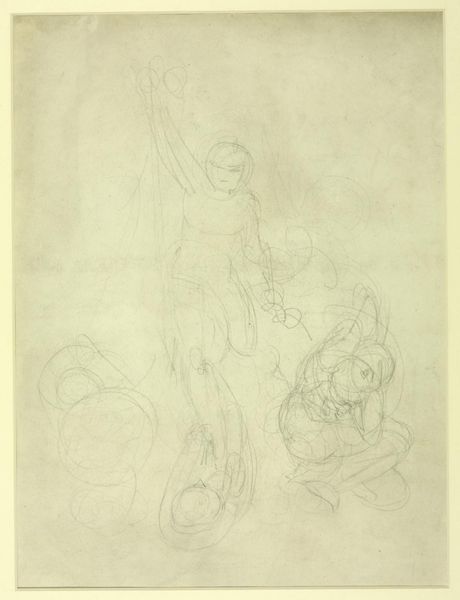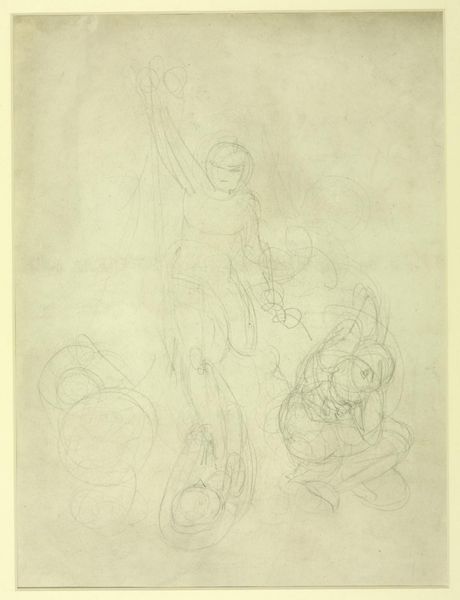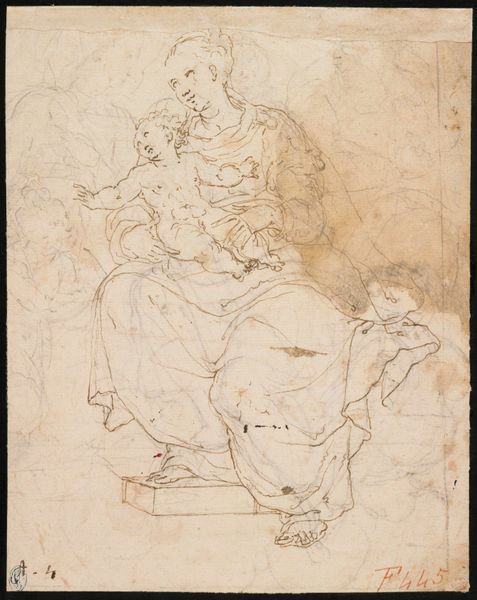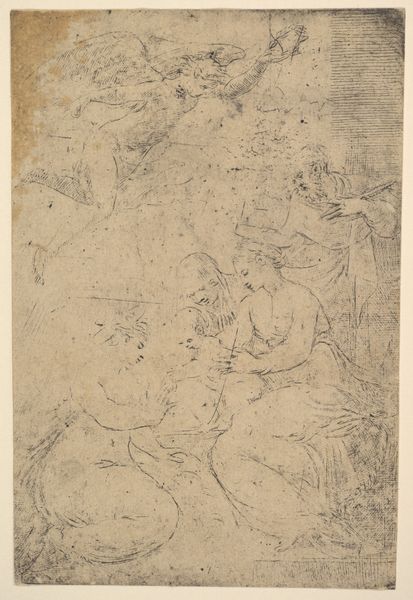
Holy Family with Saint Elizabeth and the Infant John the Baptist c. 1600 - 1800
0:00
0:00
drawing, print, paper, ink, chalk, black-chalk
#
portrait
#
drawing
#
ink painting
# print
#
figuration
#
paper
#
11_renaissance
#
ink
#
chalk
#
history-painting
#
italian-renaissance
#
black-chalk
Dimensions: 395 x 302 mm
Copyright: Public Domain
Curator: Here we have "Holy Family with Saint Elizabeth and the Infant John the Baptist," a drawing from around 1600 to 1800. It resides here at the Art Institute of Chicago. Editor: Immediately, I'm struck by the rawness. It feels like we’re seeing the artist’s hand at work, laying down preliminary sketches rather than a finished piece. Curator: Indeed. The materiality speaks volumes. Look closely: the artist employed black chalk and ink on paper. Considering its age, observe the paper itself; its weave and potential origin contribute to its value and preservation challenges. This wasn't mass-produced. Each sheet would have been deliberately prepared, representing labor and resource constraints of the era. Editor: And within that framework, we see the composition leaning into a classical pyramid. The figures are carefully arranged, guiding the eye upwards, anchored by the solid base of the holy figures. I can't help but appreciate the geometric sensibility at play and consider the implications of religious artworks using geometric structures for reverence. Curator: Precisely, this print reflects a deliberate Italian Renaissance artistic movement. One may ponder whether chalk or ink was prioritized and how accessing these materials affected studio output and apprenticeships in this artist’s community. Editor: It’s captivating how the lack of color throws focus onto line and form. Note how each line serves to delineate shape but simultaneously implies shadow and volume. The bareness enhances an emotive perception; like seeing something exposed and pure. Curator: Agreed, but this lack of color also underscores cost and access. Pigments were costly, binding production techniques closely tied with patronage networks of artists. Consider who could afford pigment, impacting what kind of images ordinary folk saw and how frequently artists of diverse socio-economic groups gained recognition. Editor: I can now read it both ways: on one hand the visual form, the elegant dance of lines, and the deliberate arrangement; or, when viewed as artifact and the residue of certain labor constraints. Interesting food for thought! Curator: This drawing underscores how context fundamentally shifts perception; looking closer at the relationship of its materials reveals the economic underpinnings and societal structures of art production.
Comments
No comments
Be the first to comment and join the conversation on the ultimate creative platform.
